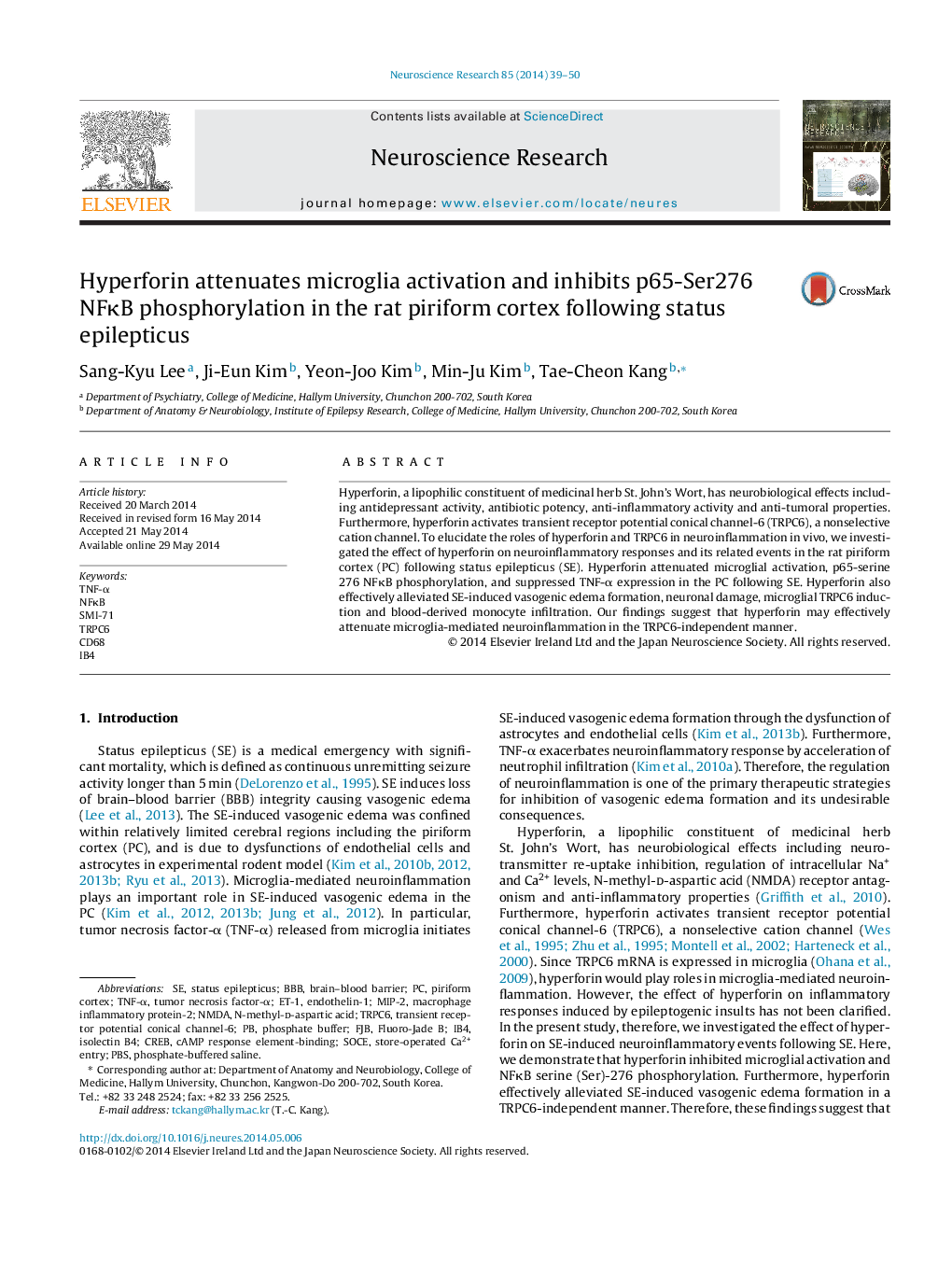| Article ID | Journal | Published Year | Pages | File Type |
|---|---|---|---|---|
| 4351401 | Neuroscience Research | 2014 | 12 Pages |
•Hyperforin prevented vasogenic edema and neuronal death induced by SE.•Microglial activation and monocyte infiltration were attenuated by hyperforin.•TNF-α-expression in activated microglia was reduced by hyperforin.•p65-Ser276 NFκB phosphorylation in microglia was inhibited by hyperforin.•Anti-inflammatory action of hyperforin was independent of TRPC6 activation.
Hyperforin, a lipophilic constituent of medicinal herb St. John's Wort, has neurobiological effects including antidepressant activity, antibiotic potency, anti-inflammatory activity and anti-tumoral properties. Furthermore, hyperforin activates transient receptor potential conical channel-6 (TRPC6), a nonselective cation channel. To elucidate the roles of hyperforin and TRPC6 in neuroinflammation in vivo, we investigated the effect of hyperforin on neuroinflammatory responses and its related events in the rat piriform cortex (PC) following status epilepticus (SE). Hyperforin attenuated microglial activation, p65-serine 276 NFκB phosphorylation, and suppressed TNF-α expression in the PC following SE. Hyperforin also effectively alleviated SE-induced vasogenic edema formation, neuronal damage, microglial TRPC6 induction and blood-derived monocyte infiltration. Our findings suggest that hyperforin may effectively attenuate microglia-mediated neuroinflammation in the TRPC6-independent manner.
